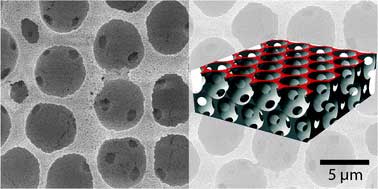| Posted: January 19, 2007 |
Super-hydrophobic surfaces made from Teflon |
|
(Nanowerk News) Kitchen surfaces that require hardly any cleaning might sound like a pipedream, but UK-based scientists have made surface coatings that could mean just that ("Super-hydrophobic surfaces made from Teflon" – free access article).
|
|
Ullrich Steiner and Pieter van der Wal at the University of Cambridge, UK, have developed a way to make surfaces that stay dry and clean, just like the lotus leaf. A lotus plant's leaf never gets wet, even after a rainfall. Instead the water beads up and rolls off the leaf's surface, taking any dirt away with it.
|
 |
| Large holes in the surface, left by polystyrene particles, give the coating its non-stick quality
|
|
While these so-called super-hydrophobic surfaces have been made before, this method is both simple and cheap making use of the commercially available Teflon, the same stuff used for non-stick frying pans, explained Steiner.
|
|
The researchers applied the same method used to make ordinary Teflon coatings but mixed in some much larger polystyrene particles. When the film is heated, the polystyrene particles are removed, leaving behind large holes, both at the surface and deeper inside the coating. This surface porosity is what gives the coating its self-cleaning properties, says Steiner.
|
|
As well as easy-clean surfaces in the kitchen and bathroom, Steiner also foresees applications in the bio-medical field. 'Imagine a bottle of a very precious medicine. If its inside is covered by a super-hydrophobic surface, all its content can be reliably drained,' he said.
|
|
Claudio Della Volpe, an applied physical chemistry researcher at the University of Trento, Italy, said its uses could be even more widespread. 'Only imagination limits the possible applications,' said Della Volpe.
|

